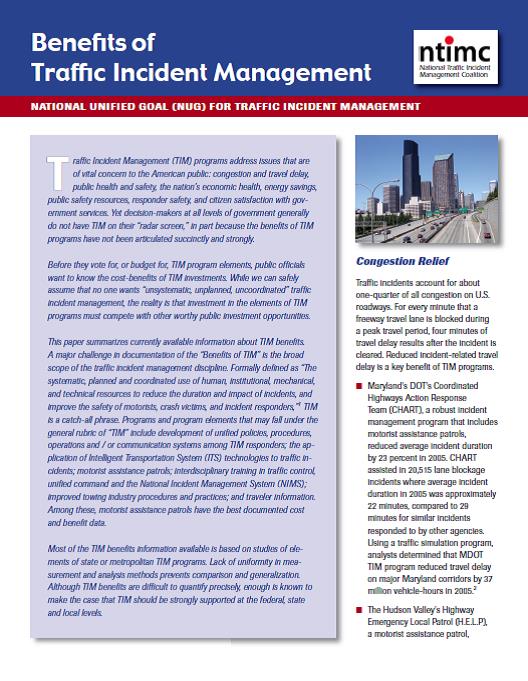Overview
 Traffic Incident Management (TIM) programs address congestion and travel delay, public health and safety, energy savings, public safety resources, responder safety, and more. This report is a review of the benefits of TIM programs. TIM is very broad, and includes elements such as development of unified policies, procedures, operations and / or communication systems among TIM responders; the application of Intelligent Transportation System (ITS) technologies to traffic incidents; motorist assistance patrols; interdisciplinary training in traffic control, unified command and the National Incident Management System (NIMS); improved towing industry procedures and practices; and traveler information.
Traffic Incident Management (TIM) programs address congestion and travel delay, public health and safety, energy savings, public safety resources, responder safety, and more. This report is a review of the benefits of TIM programs. TIM is very broad, and includes elements such as development of unified policies, procedures, operations and / or communication systems among TIM responders; the application of Intelligent Transportation System (ITS) technologies to traffic incidents; motorist assistance patrols; interdisciplinary training in traffic control, unified command and the National Incident Management System (NIMS); improved towing industry procedures and practices; and traveler information.